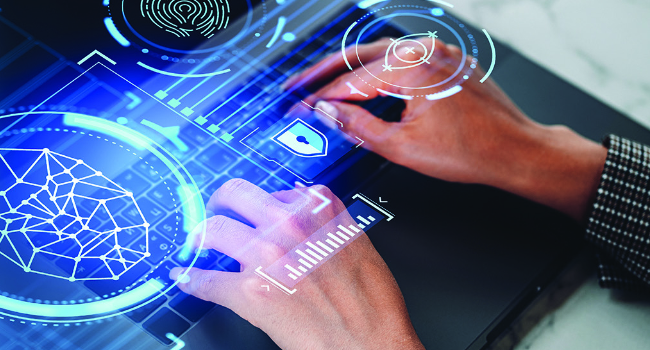
A Biometric Revolution
- By William Davis
- Mar 26, 2024
In an era where technological advancements redefine the way we live and work, the transition from classic credentials to biometric authentication stands out as a pivotal shift in the realm of security. Nearly gone are the days of traditional badges and access cards; instead, our own unique biological markers are taking center stage, offering a more secure and seamless authentication experience.
As organizations strive to fortify their security measures, biometric credentials have emerged as a game-changer. Fingerprint recognition, iris scans and facial recognition are becoming the new norm, replacing the vulnerability of lost or stolen badges. This transition not only enhances security but also streamlines access control, reducing the risk of unauthorized entry.
The corporate world is at the forefront of adopting biometric credentials. Major tech companies, financial institutions and government agencies are leading the charge. With the ability to uniquely identify individuals based on their physiological or behavioral characteristics, biometrics offer a level of accuracy and reliability that is hard to match by traditional means.
The advantages of biometric credentials extend beyond mere security. The convenience factor cannot be understated. This user-friendly approach not only improves efficiency but also reduces the administrative burden associated with managing traditional credential systems.
Here's a deeper exploration of the benefits driving the widespread adoption of biometrics.
Unparalleled security. Biometric identifiers are unique to everyone, providing a level of security that surpasses traditional credentials. Fingerprint patterns, iris scans, and facial features are highly distinctive, making it exceedingly difficult for unauthorized individuals to replicate or forge access.
Convenience and efficiency. One of the most apparent advantages is the sheer convenience biometrics offer. Users no longer need to remember complex passwords or carry physical badges. A simple touch, glance, or swipe is all that is required, streamlining the authentication process, and saving time for both individuals and organizations.
Reduced risk of credential theft. Traditional credentials, such as badges or access cards, are susceptible to loss, theft, or unauthorized duplication. Biometric data, being intrinsic to the individual, significantly reduces the risk of unauthorized access through stolen credentials. This enhances overall security and minimizes the need for constant reissuing of lost or compromised badges.
User-friendly experience. Biometric authentication provides a more user-friendly experience, particularly in environments where quick and seamless access is crucial. This ease of use contributes to higher user compliance, as individuals are more likely to embrace a system that doesn't require memorization of passwords or the hassle of carrying physical credentials.
Reduced administrative burden. Managing traditional credential systems involves administrative overhead, including issuing, revoking and replacing access cards. Biometric systems, once implemented, reduce this administrative burden significantly. Enrolling and managing users in the system becomes more straightforward, with less time and effort required for maintenance. In some case self-enrollment can be established to even further the speed the process.
Enhanced accuracy and reliability. Biometric authentication systems boast high accuracy rates in identifying individuals. False positives and false negatives are minimized, ensuring that authorized users gain swift access while maintaining the security integrity of the system.
Multi-factor authentication integration. Biometrics often serve as a foundational element in multi-factor authentication strategies. Combining biometric identifiers with other authentication factors, such as passwords or smart cards, creates a robust security framework that addresses various threat vectors.
As the advantages of biometric authentication become more evident, industries ranging from finance to healthcare continue to embrace this transformative technology, reshaping the landscape of security and access control. The evolution from classic credentials to biometrics represents not just a shift in technology but a paradigm change, in how we perceive and implement identity verification.
Privacy concerns, however, accompany this technological leap. As we embrace the era of biometric identification, questions arise about the security of personal data and the potential misuse of such information. Striking the right balance between enhanced security, individual privacy, hardened data storage and solid policies will be a key challenge in the widespread adoption of biometric credentials.
While the transition from classic badges to biometric credentials is underway, challenges and controversies are inevitable. Yet, the allure of heightened security, coupled with the simplicity and efficiency biometrics bring to the table, signals a future where our very biology becomes the key to unlocking doors, both physical and digital. As the world navigates this transformative shift, one thing is clear – the days of the classic credential are numbered, and the biometric revolution is here to stay.
This article originally appeared in the March / April 2024 issue of Security Today.